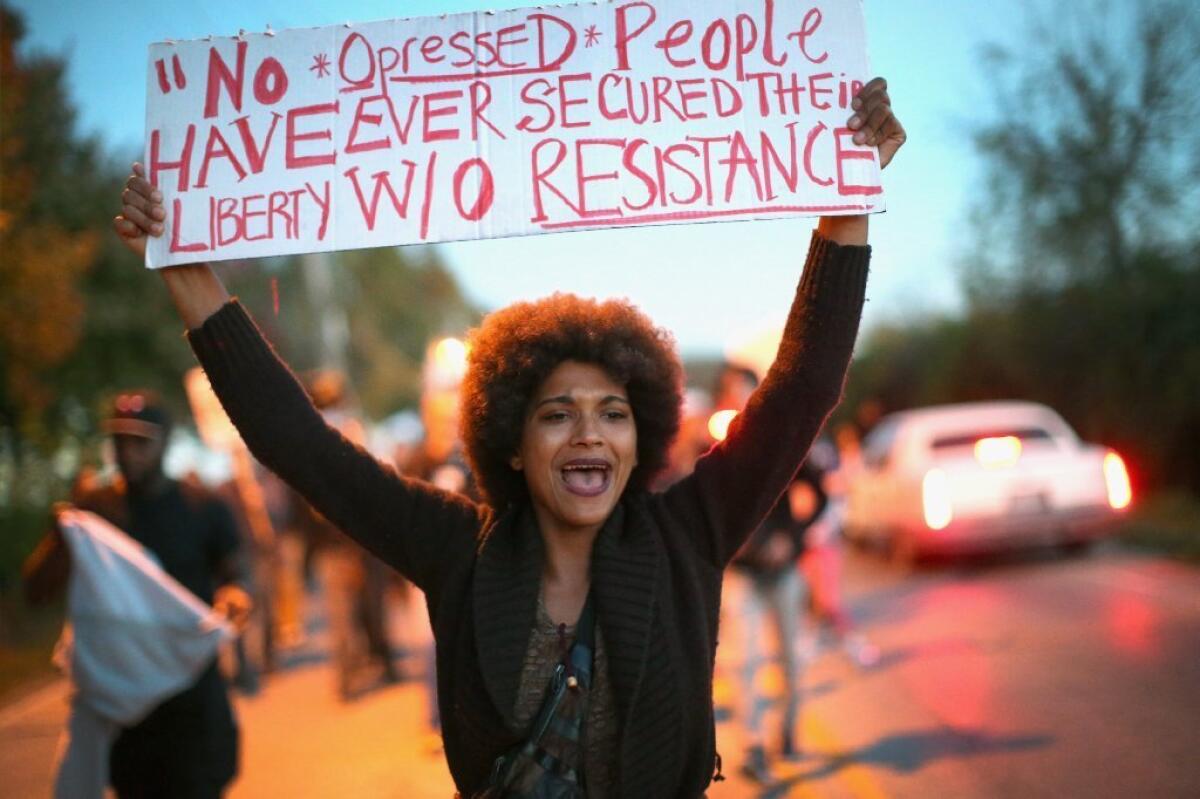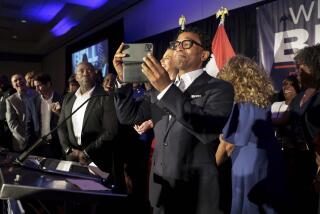Understanding Ferguson: A guide to the best essays and journalism

There is no single explanation for why Ferguson, Mo., erupted this summer. Other communities have wrestled with the aftermath of controversial police shootings. Other cities have struggled with the lingering forces of segregation and racial disadvantage. Other vigils have been held, sermons delivered.
But the Aug. 9 death of Michael Brown, an unarmed black 18-year-old, by a white police officer prompted something akin to a civic revolt in Ferguson, a predominately black St. Louis suburb. Since then, the city’s low profile has been superseded by months of well-documented social protest and anomie.
On Monday evening, officials announced that a grand jury had declined to indict the officer who shot Brown, Darren Wilson.
In addition to The Times’ ongoing coverage of Ferguson, journalists, academics and citizens across the U.S. have been grappling with the issues raised by the unrest. Here’s a sample of some of the stories, essays and reports that have appeared elsewhere:
FERGUSON’S DEMONSTRATORS
“Watching children, teenagers and elderly people running for their lives with rubber bullets flying and hitting people anywhere on their body, is heartbreaking.... It’s a haunting experience to remember - running and hiding from the police, trying to stay alive.” In a first-person essay that appeared in Ebony magazine, Johnetta Elzie, a young leader involved with the Ferguson protest movement, describes what it was like to be at the scene of Michael Brown’s death and to witness the police actions that followed.
Related reads: Elzie and another activist, DeRay McKesson, run a daily email newsletter that links to the daily news coverage of Ferguson; a Q&A for people tired of the protesters.
TESTING THE SOCIAL CONTRACT
“Malcolm X said that the racial concerns of the United States would be resolved by either the ballot or the bullet,” wrote the New Yorker’s Jelani Cobb, adding that “the images emerging from Ferguson, Missouri, have seemed like a tableau of ‘60s history.” Cobb notes the racial dissonance of Ferguson’s political structure - a largely black town managed by an overwhelmingly white city council and police force - and sees maladies reminiscent of civil rights-era disenfranchisement.
Related reads: Cobb’s essay on how “a single death can be seen as a collective threat”; BuzzFeed’s Joel Anderson on what it was like to be a black journalist in Ferguson during its worst night.
COURTS GONE AWRY
“Some of the towns in St. Louis County can derive 40% or more of their annual revenue from the petty fines and fees collected by their municipal courts,” Radley Balko wrote in a reported-opinion piece on municipal courts for the Washington Post. This issue would become one of the essential texts of the debate over the justice system in the 90 municipalities of St. Louis County. “To many residents, the cops and court officers are just outsiders who are paid to come to their towns and make their lives miserable. There’s also a widely held sentiment that the police spend far more time looking for petty offenses that produce fines than they do keeping these communities safe.”
Ferguson has since moved to reform its municipal court system, and other local courts have come under scrutiny.
Related reads: Research papers on St. Louis County’s municipal courts from ArchCity Defenders and the Better Together coalition.
AT AN ECONOMIC DISADVANTAGE
“The federal government’s response to the Ferguson ‘troubles’ has been to treat the town as an isolated embarrassment, not a reflection of the nation in which it is embedded,” writes Richard Rothstein for the Economic Policy Institute. However, he adds, the demographic landscape of St. Louis, as with many American cities, remains deeply influenced by the historical forces of segregation and inequality.
Rothstein’s extensive piece documents how those forces in St. Louis were driven by federal, state and local policy.
Related read: Many north St. Louis County residents struggle to get by economically and are rarely rooted to one municipality.
LIFE TOGETHER
“We didn’t do the typical American thing, which is to run away from each other,” Dan Duncan, a drug and alcohol counselor who tried to prevent “white flight” in Ferguson, tells the Wall Street Journal.
Although the demographics in Ferguson have shifted from predominantly white to predominantly black over the years, Ferguson is more racially diverse than some of its neighboring cities. But as the Journal points out in this piece on the lessons of racial integration, white and black Americans often have a different idea of what constitutes integration. Additionally, Ferguson’s black residents have been less likely to vote than white residents who have lived in the city longer.
Related reads: White Ferguson residents seemed caught off guard by the outrage after Brown’s death; a former state senator relates the pitfalls of being a white politician in north St. Louis County.
BEHIND THE THIN BLUE LINE
“I’ve been called everything but a child of God,” Marione Johnson, a black Ferguson police dispatcher, tells the New York Times’ Dan Barry of the months after Brown’s death.
Other than leaders’ remarks, not a lot has been published on the perspective of the police, whose relationship with the media in Ferguson has often been contentious. Barry’s piece on Ferguson’s police department showed officers straining with anxiousness over their own safety for the last three months.
Related read: St. Louis-area police forces rarely demographically reflect their communities.
Follow @MattDPearce for national news
More to Read
Sign up for Essential California
The most important California stories and recommendations in your inbox every morning.
You may occasionally receive promotional content from the Los Angeles Times.











